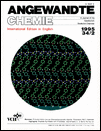Trace Analysis of the Radionuclides 90Sr and 89Sr in Environmental Samples I: Laser Mass Spectrometry†
This work was supported by the Bundesministerium für Umwelt, Naturschutz und Reaktorsicherheit, by the Bundesamt für Strahlenschutz, and the Umweltzentrum der Universität Mainz.
Abstract
Strontium-90 is one of the most poisonous radionuclides. Its toxicity results from its long half-life of 28.5 years and permanent deposition in the blood-forming bone system. Strontium-90 is formed in high yields during the nuclear fission of uranium-235 and plutonium-239. The classic analytical procedure for the determination of 90Sr, which relies on the β−-radiation of the daughter nuclide yttrium-90, necessitates the chemical removal of all accompanying nuclides. This method requires the Sr/Y ratio to be at equilibrium which takes about two to three weeks to achieve—far too long for the analysis of acute contaminations. Three communications deal with new procedures for ultra-trace analysis using complex physical detection methods (resonance ionization and accelerator mass spectrometry) and high-performance separation techniques (high-performance ion chromatography, HPIC) are presented. In accordance with the strategies of the German Federal Ministry of the Environment, Nature Conservation, and Nuclear Safety, precision methods are described for the determination of the strontium-90 content in aerosols. These techniques yield data for calculations of the spread of contaminants, which in turn yield results that can be verified in various samples with the aid of the novel fast detection method (HPIC with on-line detectors). The three analytical procedures are set up in a modular manner and can therefore be utilized in variable combinations. They also indicate the high level of refinement achieved by modern ultra-trace analyses.




